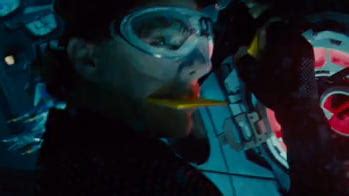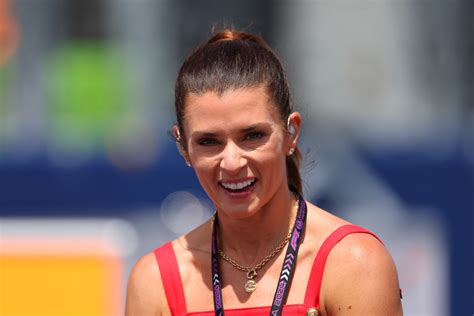
Tom Cruise encountered unexpected challenges while filming underwater scenes for the upcoming “Mission: Impossible – Dead Reckoning Part One,” admitting he underestimated the physical limits and complexities involved in holding his breath for extended periods.
Tom Cruise, known for his dedication to performing his own stunts, faced unexpected hurdles during the underwater sequences of “Mission: Impossible – Dead Reckoning Part One.” In a recent interview, Cruise conceded that he hadn’t fully grasped the extent of the challenges involved in holding his breath for prolonged periods while filming these scenes. The actor, celebrated for his commitment to realism and pushing boundaries, revealed that the underwater work proved to be more demanding than initially anticipated. This admission provides insight into the rigorous preparation and unexpected obstacles encountered during the production of the highly anticipated film.
During an interview promoting the film, Cruise elaborated on the difficulties he faced. “The underwater stuff, that was… we didn’t plan on how long we were going to be down there,” he stated, underscoring the unforeseen complexities of the underwater shoots.
The “Mission: Impossible” franchise is known for its breathtaking action sequences and Cruise’s relentless pursuit of authenticity. For this latest installment, Cruise underwent extensive training to prepare for the underwater scenes. This training included learning techniques to extend his breath-holding capacity and adapting to the disorienting environment of being submerged for extended durations.
The underwater sequences are expected to be among the film’s highlights, showcasing Cruise’s commitment to delivering unparalleled cinematic experiences. Despite the challenges, Cruise’s dedication to his craft remains unwavering, promising audiences a thrilling and immersive viewing experience. The actor’s willingness to confront and overcome these obstacles underscores his reputation as one of Hollywood’s most dedicated and adventurous performers.
The details surrounding the specific scenes and the plot implications of the underwater sequences are still under wraps, adding to the anticipation for the film’s release. However, Cruise’s candid discussion of the challenges provides a glimpse into the meticulous preparation and unexpected difficulties inherent in creating high-stakes action cinema.
Behind the Scenes: Preparing for the Depths
The underwater sequences in “Mission: Impossible – Dead Reckoning Part One” required meticulous planning and extensive training. Cruise and the production team understood that filming underwater presented a unique set of challenges, ranging from maintaining safety to capturing high-quality footage. Cruise, who is known for his hands-on approach to stunts, dedicated himself to mastering the necessary skills and techniques.
-
Breath-Holding Training: Cruise worked with expert free divers to improve his breath-holding capacity. This involved learning techniques to conserve oxygen, manage stress, and increase lung capacity. The training regimen was rigorous, demanding discipline and focus.
-
Underwater Navigation: Navigating underwater environments required Cruise to develop a strong sense of spatial awareness. He learned how to orient himself in the water and move efficiently without relying on visual cues. This training was essential for performing stunts and maintaining composure in disorienting conditions.
-
Safety Protocols: Safety was paramount during the underwater shoots. The production team implemented strict protocols to ensure the well-being of Cruise and the entire crew. Divers were on standby, and emergency procedures were in place to address any potential issues.
-
Communication: Clear communication was crucial for coordinating the underwater sequences. The team used specialized underwater communication systems to convey instructions and monitor the actors’ condition. This ensured that everyone was on the same page and that the shoots ran smoothly.
Challenges Encountered
Despite the extensive preparation, the underwater shoots presented several unforeseen challenges. These challenges tested Cruise’s resilience and the team’s ability to adapt.
-
Extended Submersion: Cruise admitted that the initial plans underestimated the amount of time he would need to spend underwater. This required him to push his limits and endure longer periods of breath-holding than anticipated.
-
Environmental Factors: The underwater environment introduced variables that were difficult to control. Water temperature, currents, and visibility all affected the filming process. The team had to adjust their techniques and equipment to cope with these challenges.
-
Equipment Malfunctions: Underwater equipment is prone to malfunctions, which can disrupt the filming process and pose safety risks. The team had to be prepared to address these issues quickly and efficiently.
-
Physical Demands: The physical demands of underwater filming were significant. Cruise had to exert himself while holding his breath, which placed considerable strain on his body. He relied on his training and physical conditioning to withstand these demands.
Cruise’s Commitment to Realism
Tom Cruise’s dedication to performing his own stunts is a hallmark of the “Mission: Impossible” franchise. This commitment to realism sets the films apart and enhances the audience’s viewing experience. By taking on the challenges himself, Cruise brings a level of authenticity to the action sequences that would be impossible to replicate with CGI or stunt doubles.
-
Enhanced Authenticity: Cruise’s willingness to perform his own stunts adds a layer of authenticity to the films that resonates with audiences. Viewers appreciate the fact that they are watching Cruise himself navigate dangerous situations, which heightens the sense of excitement and immersion.
-
Inspiration to Others: Cruise’s dedication to his craft serves as an inspiration to other actors and filmmakers. He demonstrates that with hard work, preparation, and a willingness to take risks, it is possible to achieve extraordinary feats on screen.
-
Setting New Standards: Cruise’s stunts have set new standards for action cinema. He continually pushes the boundaries of what is possible, challenging himself and his team to create ever more spectacular and thrilling sequences.
Impact on the Film Industry
Tom Cruise’s approach to action filmmaking has had a significant impact on the film industry. His commitment to realism and his willingness to perform his own stunts have influenced the way action sequences are conceived and executed.
-
Emphasis on Practical Effects: Cruise’s films emphasize the use of practical effects over CGI. This approach results in action sequences that feel more visceral and authentic.
-
Stunt Coordination and Safety: Cruise’s stunts require meticulous coordination and rigorous safety protocols. His films have raised the bar for stunt work, demonstrating the importance of careful planning and execution.
-
Audience Expectations: Cruise’s stunts have raised audience expectations for action cinema. Viewers now expect action sequences to be both thrilling and believable.
Frequently Asked Questions (FAQ)
-
What specific challenges did Tom Cruise face while filming the underwater scenes for “Mission: Impossible – Dead Reckoning Part One?”
- Tom Cruise faced challenges related to extended submersion, which required him to hold his breath for longer periods than initially planned. He also had to contend with unpredictable environmental factors such as water temperature and currents, as well as potential equipment malfunctions. The physical demands of performing stunts while holding his breath added to the complexity.
-
How did Tom Cruise prepare for the underwater sequences in the film?
- Cruise underwent extensive training with expert free divers to improve his breath-holding capacity, learn underwater navigation techniques, and adapt to the disorienting environment of being submerged for extended durations. The training regimen was rigorous, focusing on conserving oxygen, managing stress, and increasing lung capacity.
-
Why is Tom Cruise known for performing his own stunts, and what impact does this have on the “Mission: Impossible” franchise?
- Tom Cruise is known for his commitment to performing his own stunts to enhance the authenticity and realism of his films. This dedication sets the “Mission: Impossible” franchise apart by providing viewers with a more immersive and thrilling experience, as they are watching Cruise himself navigate dangerous situations.
-
What safety protocols were implemented during the underwater shoots?
- Safety was a top priority during the underwater shoots. The production team implemented strict protocols to ensure the well-being of Cruise and the entire crew. Divers were on standby, and emergency procedures were in place to address any potential issues. Specialized underwater communication systems were used to convey instructions and monitor the actors’ condition.
-
How has Tom Cruise’s approach to action filmmaking influenced the film industry?
- Tom Cruise’s approach to action filmmaking, particularly his emphasis on practical effects and his willingness to perform his own stunts, has significantly influenced the film industry. His films have raised the bar for stunt work, emphasizing the importance of careful planning and execution. Additionally, Cruise’s stunts have raised audience expectations for action cinema, with viewers now expecting action sequences to be both thrilling and believable.
In-Depth Analysis: Cruise’s Commitment to Immersion
Tom Cruise’s willingness to push physical boundaries and immerse himself fully in his roles is a defining characteristic of his career. His commitment to authenticity extends beyond mere stunt work; it encompasses a deep understanding of the character and the world he inhabits. This immersion is what makes his performances so compelling and his films so engaging.
-
Method Acting Techniques: While not a traditional method actor, Cruise employs techniques that allow him to connect with his characters on a deeper level. He immerses himself in the physical and emotional demands of the role, often undergoing rigorous training and preparation.
-
Building Trust with the Crew: Cruise fosters a collaborative environment on set, building trust with his crew and encouraging them to push their own limits. He values their expertise and relies on their support to achieve his vision.
-
Attention to Detail: Cruise is known for his meticulous attention to detail. He works closely with the costume designers, set decorators, and other members of the production team to ensure that every aspect of the film is authentic and believable.
The Evolving Landscape of Action Cinema
Action cinema has evolved significantly over the years, with advancements in technology and changes in audience expectations driving innovation. Tom Cruise has been at the forefront of this evolution, consistently pushing the boundaries of what is possible on screen.
-
The Rise of CGI: CGI has become an increasingly prevalent tool in action cinema, allowing filmmakers to create spectacular visuals that would be impossible to achieve with practical effects. However, Cruise has remained a staunch advocate for practical effects, believing that they provide a more visceral and authentic experience for the audience.
-
The Importance of Storytelling: While action sequences are undoubtedly a key element of action cinema, Cruise understands that they must be grounded in a compelling story. He works closely with writers and directors to ensure that the action serves the narrative and enhances the emotional impact of the film.
-
Global Appeal: Action cinema has a global appeal, transcending cultural and linguistic barriers. Cruise’s films have been successful in international markets, attracting audiences from all over the world.
The Future of “Mission: Impossible”
The “Mission: Impossible” franchise has been a staple of action cinema for over two decades, and there is no sign of it slowing down. With each new installment, Cruise and his team continue to raise the bar, delivering thrilling and innovative action sequences that captivate audiences.
-
New Technologies: The franchise has embraced new technologies, incorporating cutting-edge special effects and innovative filmmaking techniques. This has allowed the films to stay fresh and relevant, appealing to new generations of viewers.
-
Expanding the Universe: There is potential to expand the “Mission: Impossible” universe with spin-offs and sequels. The franchise has a rich mythology and a diverse cast of characters, providing ample opportunities for further exploration.
-
Cruise’s Legacy: Tom Cruise’s legacy as an action star is secure. His dedication to his craft, his willingness to take risks, and his commitment to entertaining audiences have made him one of the most beloved and respected actors in the world.
More Detailed Analysis: The Technicalities of Underwater Filming
Underwater filming presents a unique set of technical challenges that require specialized equipment, expertise, and careful planning. The production team for “Mission: Impossible – Dead Reckoning Part One” had to overcome these challenges to create the stunning underwater sequences that are expected to be a highlight of the film.
-
Underwater Cameras and Lighting: Standard cameras and lighting equipment are not suitable for underwater use. The team employed specialized underwater cameras that are designed to withstand the pressure and corrosive effects of water. They also used underwater lighting systems to illuminate the scenes and capture clear footage.
-
Underwater Communication Systems: Clear communication is essential for coordinating underwater shoots. The team used specialized underwater communication systems that allowed them to communicate with Cruise and other members of the crew. These systems typically use hydrophones and transducers to transmit sound waves through the water.
-
Water Clarity and Visibility: Water clarity and visibility can vary significantly depending on the location and conditions. The team had to choose locations with clear water and take measures to improve visibility, such as filtering the water and using underwater lights.
-
Buoyancy Control: Maintaining buoyancy is crucial for underwater filming. The team used buoyancy compensators (BCDs) to control their buoyancy and remain stable in the water. They also used weights to fine-tune their buoyancy and prevent themselves from floating to the surface.
The Psychological Aspects of Underwater Filming
Underwater filming can be psychologically challenging, especially for actors who are not accustomed to being submerged for extended periods. Tom Cruise had to overcome these challenges to perform the underwater sequences in “Mission: Impossible – Dead Reckoning Part One.”
-
Claustrophobia: Being confined underwater can trigger feelings of claustrophobia, especially in enclosed spaces. Cruise had to learn to manage these feelings and remain calm in challenging situations.
-
Anxiety and Stress: Holding one’s breath for extended periods can be anxiety-inducing and stressful. Cruise had to develop techniques to manage his anxiety and remain focused on his performance.
-
Disorientation: The underwater environment can be disorienting, making it difficult to maintain a sense of direction. Cruise had to develop a strong sense of spatial awareness to navigate underwater and perform his stunts effectively.
The Importance of Physical Conditioning
Underwater filming requires a high level of physical conditioning. Tom Cruise underwent rigorous training to prepare his body for the demands of the underwater sequences in “Mission: Impossible – Dead Reckoning Part One.”
-
Cardiovascular Fitness: Maintaining cardiovascular fitness is essential for endurance underwater. Cruise engaged in regular cardio workouts to improve his stamina and oxygen efficiency.
-
Strength Training: Strength training is important for performing stunts and maneuvering underwater. Cruise worked with a personal trainer to build strength and muscle mass.
-
Flexibility and Mobility: Flexibility and mobility are crucial for preventing injuries and maximizing performance underwater. Cruise incorporated stretching and yoga into his training regimen.
Ethical Considerations in Action Filmmaking
Action filmmaking can raise ethical considerations, particularly when it comes to the safety of the actors and crew. Tom Cruise has consistently prioritized safety on his sets, working closely with stunt coordinators and safety experts to minimize risks.
-
Risk Assessment: Before undertaking any stunt, the production team conducts a thorough risk assessment to identify potential hazards and develop safety protocols.
-
Informed Consent: Actors must provide informed consent before participating in stunts, understanding the potential risks and agreeing to take them.
-
Safety Equipment: The production team provides actors with appropriate safety equipment, such as harnesses, helmets, and padding.
-
Emergency Preparedness: The production team has emergency procedures in place to address any potential accidents or injuries.
The Role of Technology in Modern Filmmaking
Technology plays an increasingly important role in modern filmmaking, enabling filmmakers to create more spectacular and immersive experiences for audiences. Tom Cruise has embraced technology in his films, using cutting-edge special effects and innovative filmmaking techniques.
-
Virtual Reality (VR): VR technology allows filmmakers to create immersive experiences that transport viewers into the world of the film.
-
Augmented Reality (AR): AR technology overlays digital content onto the real world, enhancing the viewing experience.
-
Artificial Intelligence (AI): AI technology can be used to automate tasks such as visual effects and editing, freeing up filmmakers to focus on the creative aspects of the film.
Further Analysis: Deeper Dive into the Film’s Narrative Context
While the specifics of the plot remain largely undisclosed, the presence of intricate underwater sequences suggests several potential narrative functions within “Mission: Impossible – Dead Reckoning Part One.”
-
Infiltration and Espionage: Underwater environments often lend themselves to scenes of stealth and covert operations. The sequences could involve Ethan Hunt and his team infiltrating a secure facility or retrieving sensitive information from a submerged location.
-
Escape and Evasion: Conversely, the underwater setting could be a means of escape, with the team using the water to evade pursuers or disappear from sight.
-
High-Stakes Confrontation: The sequences might culminate in a dramatic confrontation, pitting Ethan Hunt against adversaries in a perilous underwater battle.
-
Symbolic Representation: The underwater environment could also carry symbolic weight, representing the hidden depths of the conspiracy or the overwhelming challenges facing the team.
The Financial Implications of Large-Scale Action Sequences
The inclusion of elaborate action sequences, particularly those involving complex underwater filming, carries significant financial implications for the production.
-
Increased Budget: The cost of specialized equipment, extensive training, and safety measures can significantly increase the film’s overall budget.
-
Extended Production Schedule: Underwater filming often requires more time due to the technical challenges and safety protocols involved. This can extend the production schedule and add to the overall cost.
-
Potential for Delays: Unforeseen weather conditions or equipment malfunctions can cause delays, further impacting the budget and schedule.
The “Mission: Impossible” Legacy: A Historical Perspective
The “Mission: Impossible” franchise has a long and storied history, dating back to the original television series that premiered in 1966. The franchise has undergone numerous transformations over the years, but it has consistently delivered thrilling action and intricate espionage plots.
-
The Original Series: The original “Mission: Impossible” series was known for its ensemble cast, its intricate plots, and its use of gadgets and disguises.
-
The Film Reboot: The first “Mission: Impossible” film, released in 1996, starred Tom Cruise as Ethan Hunt and reinvented the franchise for a new generation.
-
Evolving Action Sequences: The action sequences in the “Mission: Impossible” films have become increasingly elaborate and ambitious over the years, pushing the boundaries of what is possible on screen.
Conclusion: Enduring Appeal and Continued Innovation
Tom Cruise’s acknowledgement of the unexpected challenges during the underwater filming of “Mission: Impossible – Dead Reckoning Part One” underscores the dedication and meticulous preparation that goes into creating these high-stakes action sequences. His commitment to realism and his willingness to push physical boundaries continue to define the franchise and captivate audiences worldwide. As the film’s release approaches, anticipation remains high for the thrilling underwater scenes that promise to be a highlight of this latest installment. The enduring appeal of “Mission: Impossible” lies in its ability to blend intricate storytelling with groundbreaking action, ensuring its place as a cornerstone of modern action cinema.









